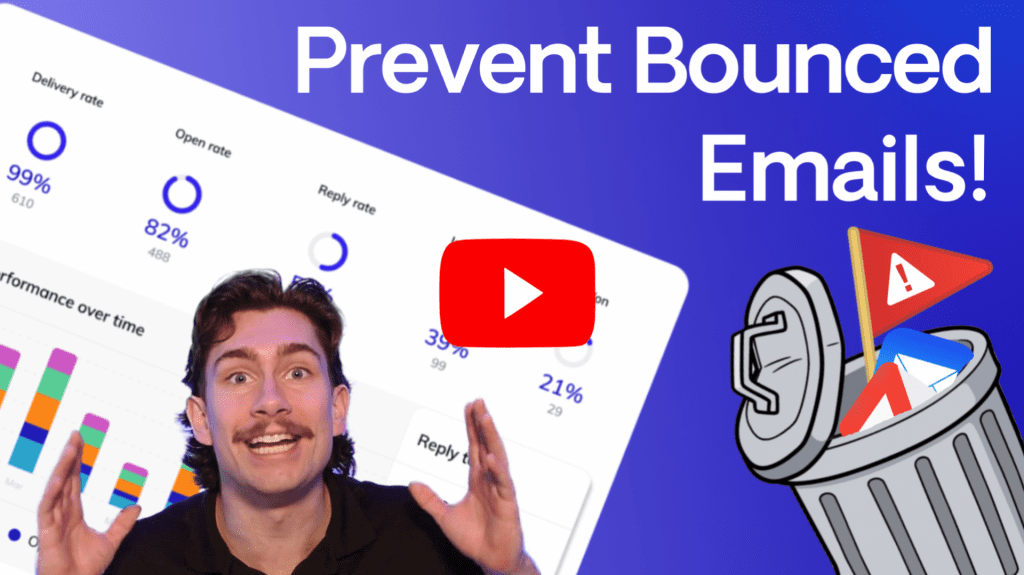Maintaining a healthy domain reputation is absolutely essential if you rely on cold email outreach for any of your business goals, be it sales, marketing, link building, or getting on people’s podcasts.
In this article, we will be taking a look at:
- What is domain reputation and how to check it;
- What affects your email domain reputation;
- Best practices for keeping your sender reputation high or recovering it from a hit.
As an email outreach platform, we’re fully aware of the consequences of not maintaining your email domain reputation and we’re here to help you stay on the good side of email service providers.
Let’s dive right into it!
Link building cheat sheet
What Is Domain Reputation?
Domain reputation is a term that refers to the well-being of your email domain. Similar to a credit score, it affects the way in which email service providers view your domain. It also directly ties in with your email deliverability: a bad reputation means low deliverability and vice versa.
There is no static value for your domain reputation – it is calculated by different ISPs (Internet service provider) and ESPs (email service provider) in a slightly different way.
How Is Domain Reputation Calculated?
However, the most important things that all of them take into consideration are the age of your domain as well as the number of times your domain has been:
- Suspended;
- Blacklisted;
- Reported for spam, phishing, or malware.
Every single email you send is tracked and subsequently given a “sender score” by the receiver. Again, there is no single algorithm that does this, every ISP has its own way of scoring your emails.
So, it is very much possible to have different reputations with different service providers.
How Is domain Reputation Different From IP Reputation?
For a person that isn’t very knowledgeable about how email work, it can be easy to confuse these two terms. However, they are two different things.
An IP address is an identifier of your computer (or server) that makes it possible for other computers to find yours on the Internet. It is stored in the DNS record.
When sending emails, the IP of your email domain is used to determine where the email is coming from. It is then assigned an IP email reputation score.
A domain, on the other hand, is the name of the server that is sending emails on your behalf. It is assigned a domain reputation score, which is separate from the IP reputation score.
I know this is confusing so let me try to sum it up in two sentences.
You can change the dedicated IP address of your email server, which will cause the IP reputation to be reset. The domain reputation is attached to your domain and will remain the same.
How To Check Your Domain Reputation?
There are many email reputation checkers available on the Internet. Depending on your email sender domain, some will be more useful than others.
Since Google is the top sender and receiver, it has a sending reputation checker of its own.
Google Postmaster Tools
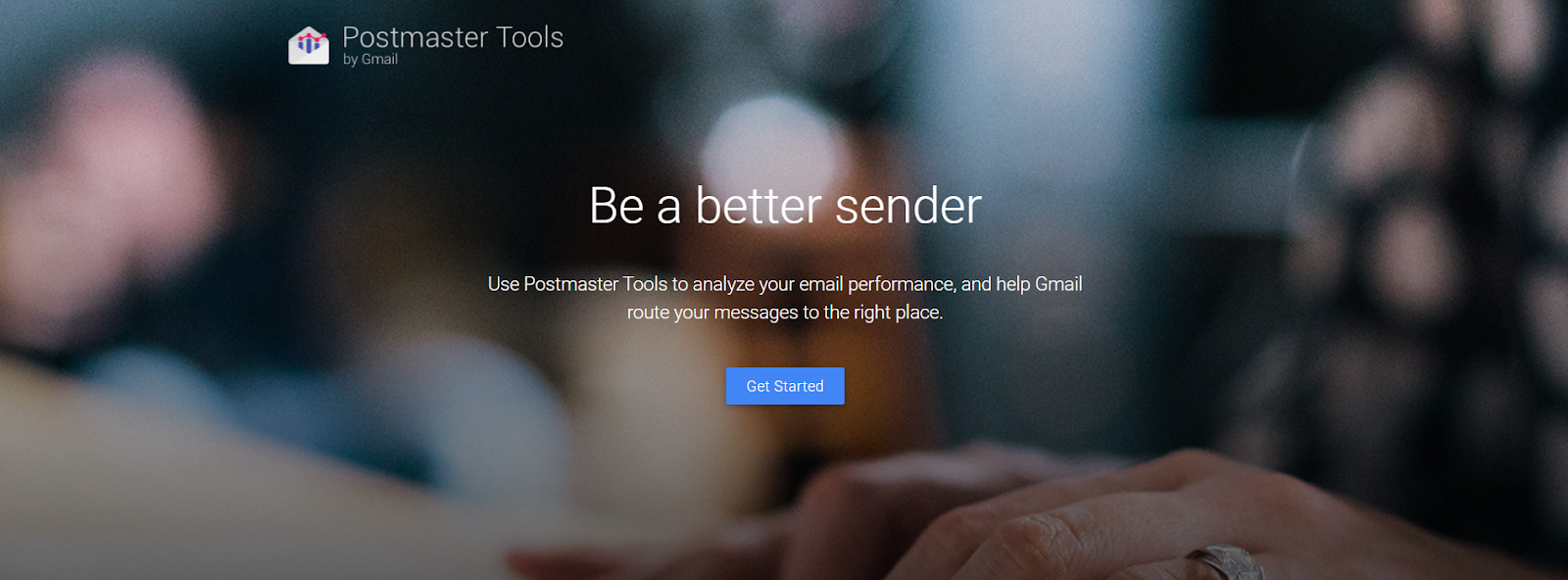
If Gmail is your biggest receiver, the Google Postmaster Tool covers pretty much everything you need – including IP and domain reputation, spam reports, delivery errors, and much more.
Microsoft SNDS
Outlook’s Smart Netword Data Services are the other largest mailbox provider of data about your domain reputation, next to Google.

It gives you very detailed information about individual and shared IP addresses, reports and deliverability issues.
Both of these providers give you daily evaluations about how your emails are performing in your receivers’ servers.
There are also many third-party (like the Barracuda reputation system) softwares available for monitoring your domain reputation, but we will stop at just these two simply because outlook and Gmail are two of the largest email receivers.
If you discover deliverability issues with these two, chances are that you have a bad domain reputation with other ESPs as well.
Talos Intelligence
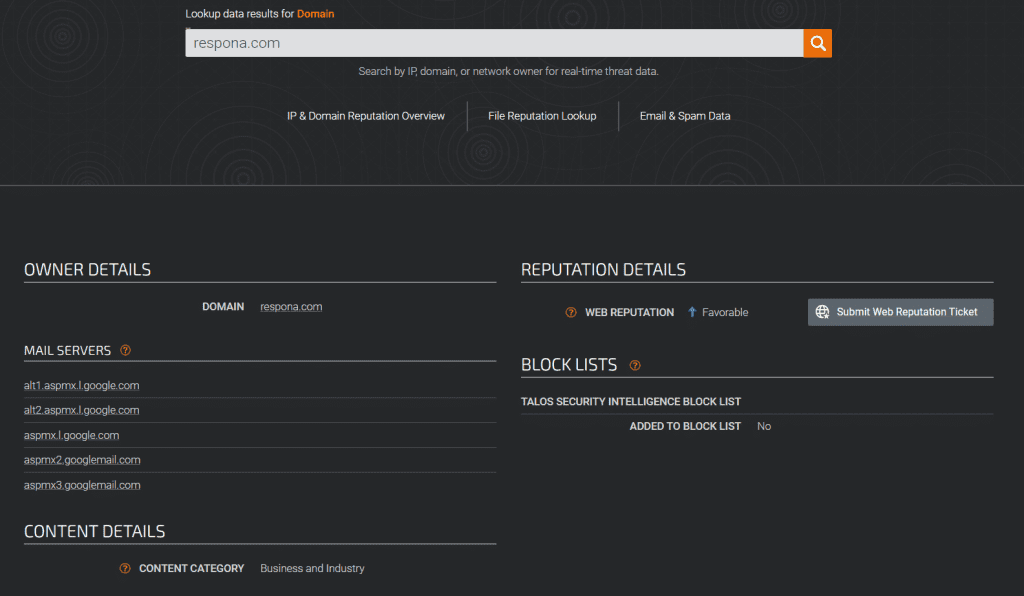
Talos Intelligence is a cloud-based threat intelligence platform developed by Cisco to protect users from malicious websites and email addresses.
Talos is a global team of threat researchers and security experts who analyze and process potential threats from around the world.
Talos gathers threat information from a variety of sources, including their own research, honeypots, public reports, and other vendors.
They use this data to create signatures for malicious websites and email addresses, as well as indicators of compromise.
Talos Intelligence helps to protect users from malicious websites by using reputation checks.
A reputation check looks at the domain name associated with a website and evaluates it based on its past behavior.
This is useful for checking your own domain reputation as well as whether you are on any blacklists.
MxToolbox
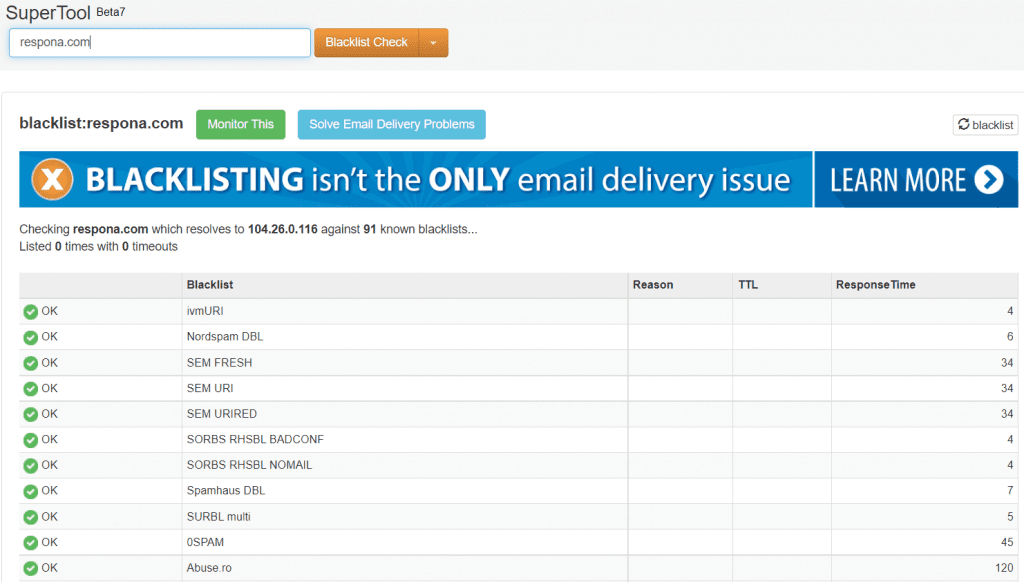
MxToolbox is an online service that provides several tools for checking the health of a domain. It provides a variety of tests that can be used to check the reputation of a domain and identify any potential issues.
The service offers a number of different tests, such as MX record lookup, domain name server (DNS) lookup, email server blacklist check, domain blacklist check, and domain health monitoring.
What Affects Domain Reputation?
There are many different factors that come into play when your domain reputation is determined.
In this section, we will discuss some of the most common ones.
1. Lack Of Domain Authentication
Before you start using your email domain for mass cold outreach, it is essential to proper the appropriate authentication protocols for it.
SPF (Sender Policy Framework), DKIM (DomainKeys Identified Mail), and DMARC (Domain-based Message Authentication, Reporting & Conformance) are all methods of authenticating email. They help to ensure that the email is coming from the legitimate source, and not from a spammer or phisher.
By setting up these domain authentication methods, you can help to protect your email domain from being used for malicious purposes.
Just setting up these three authentication protocols will massively increase the trustworthiness of your email domain in the eyes of ESPs, and greatly improve your email deliverability.
2. Lack Of Email Warmup
Older email domains have a naturally higher domain reputation simply because they have been sending out quality emails for a long time.
If you have a new domain , you can’t afford to start blasting out a huge email campaign on day 1. That is the fastest way to destroy your domain reputation.
The concept of warming up your domain is very simple. At first, you start sending emails at a low quantity at first and slowly increase that number week by week.
This will help you maintain a positive domain reputation, and slowly increase it as time goes by.
Our recommendation is to start very small: at only 10 emails/day during your first week, and then slowly increase the number by 5 daily emails, week by week, until you reach 35-40.
Any more daily emails than that greatly increase the chances of your email sender reputation taking a hit.
Additionally, you can make use of an email warmup software, such as Lemwarm to slowly increase your sender reputation or recover it after spam complaints.

3. Spam Traps
Spam traps (also referred to as honeypots) are email addresses that are used solely for the purpose of identifying spammers by an email provider or another organization.
Of course, you’re not a spammer, but even when you’re doing legitimate outreach, there is still a chance of ending up in a spam trap.
There are three types of spam traps:
- Pristine: emails that have never been used for any other purpose;
- Recycled: emails that have once been used by a person but have since been repurposed for a spam trap;
- Emails that are purposely misspelled.
Sending an email to a spam trap can cause IP or domain to be list denied, causing a ton of damage to your domain reputation and deliverability.
How do you avoid spam traps? It’s actually pretty simple:
- Never purchase an email list since they often contain outdated information and emails possibly repurposed to be spam traps;
- Avoid emails that contain typos;
- Update your email lists and always double-check if your prospect still works for the company by checking their LinkedIn.
4. High Bounce Rate
Of course, you never want to have a high bounce rate of your email outreach campaigns. More bounces = fewer people seeing your emails and replying, that much is obvious.
But did you know that bounce rates and your overall email deliverability also affects your domain reputation as a whole?
In general, an acceptable bounce rate is below 3%. Anything higher than that, and your domain’s reputation will start to go down.
There are two types of bounces: soft and hard.
A “soft” bounce is a temporary issue, and happens, for example, when your recipient’s inbox is full and cannot accept any more messages. In this case, there is not much you can do to fix it. These, in general, are not a threat to your domain reputation.
A “hard” bounce, on the other hand, happens when you reach out to invalid addresses. We actually have a whole video dedicated to email bounces, so if you’re interested to learn more about them as well as how you can improve your bounce rate, be sure to check it out:
5. Triggering Spam Filters
The main thing that triggers spam filters is spam words within the content of your emails.
This includes the obvious words and phrases like “free”, “money”, “right now”, and so on.
However, there are hundreds of regular-sounding words that you wouldn’t think of as spammy. So, the best way to avoid triggering a spam filter is to run your email pitches through a spam checker.
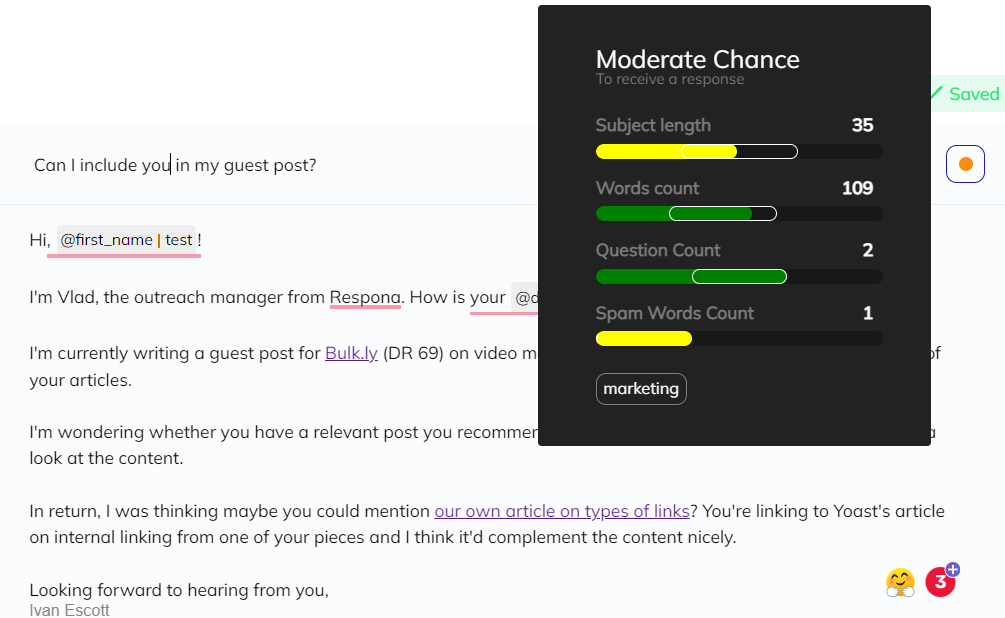
Respona features a built-in email checker that rates your pitch depending on your subject length, words count, question count, and, of course, scans it for spam words.
Always make sure to use it before launching your campaigns!
6. Double Opt-In And Opt-Out Options
An email double opt-in occurs when a person subscribes to a mailing list and then receives an email asking them to confirm their subscription. This helps to ensure that the person truly wants to receive emails from the mailing list, and it helps to reduce the number of spam complaints.
If you have an email newsletter, always make sure to use a double opt-in so you only send it to actual subscribers.

However, for cold outreach, this is not really an option. What is an option though, is providing your recipients with a button to opt out, or unsubscribe from receiving any future emails from you.
In fact, an opt-out option is a legal requirement by the FTC for any commercial emails. Failure to provide one for your own recipients may result in your email domain being penalized, and even manually reported as spam.
7. Spam Complaints
Speaking of getting manually reported as spam, this is one of the absolute worst things that could happen to your email domain.
Even just a single spam complaint for a hundred emails sent can mean bad business for your domain reputation. So you need to take special care not to provoke your recipients.
There are many reasons why someone can flag an email as “spam”. Some of the most common ones include:
- The email was not relevant to them, and they did not expect it;
- Your email was blasted out to several of their email inboxes at once;
- You included an attachment in your cold email;
- Your subject line or email content sounded spammy to them;
- You sent a transactional email right off the bat;
- You sent too many follow-ups, too often;
- They previously replied to you negatively, but you still reached out to them again.
There is no single best way to avoid getting your emails marked as spam, and all people will behave differently, but the general rules to follow are:
- Always pitch relevant people within the company: content managers, link builders, or editors for link building, marketing managers for collaboration offers, etc.;
- Respect your recipients’ time and space out your follow-up messages by 3-5 business days, and don’t send more than 1 or two of them;
- Don’t just try to sell people things, provide actual value and personalized pitches;
- Make sure to include an unsubscribe option, and never reach out to people who have asked you not to.
How Does Respona Help Maintain A Healthy Domain Reputation?
We fully understand the importance of maintaining a good domain reputation for an email marketer.
That’s why Respona comes with a powerful toolset for keeping your emails out of the spam folder.
Firstly, the built-in contact information finder ensures that all of the email addresses within your campaigns are valid and being used by a real person.
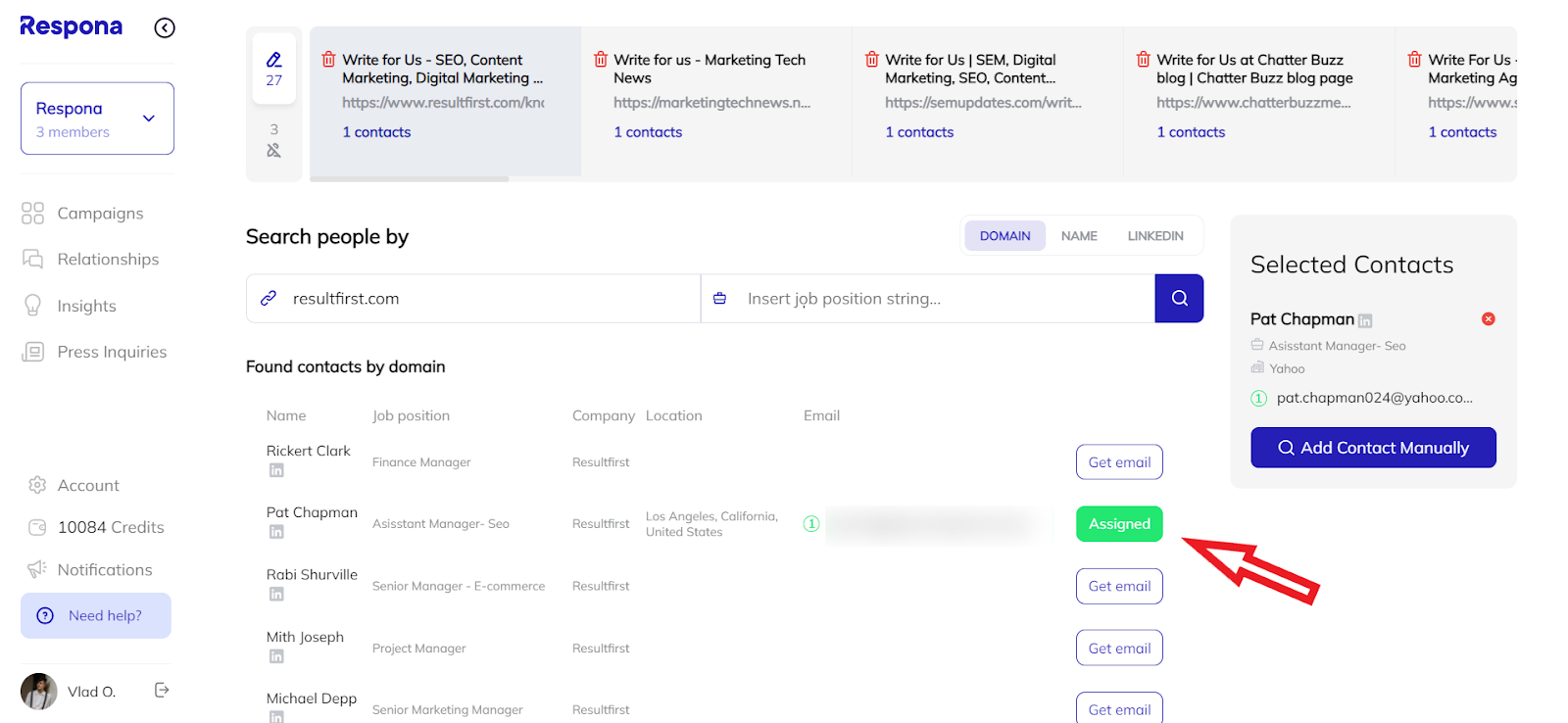
As mentioned above, while preparing your marketing email sequence, Respona also grades your pitch and highlights any spam words that might be in the text so you can quickly remove them and re-word your message.
Thanks to Respona’s built-in analytics, you are able to easily monitor the performance of each individual campaign and address engagement/deliverability issues immediately.
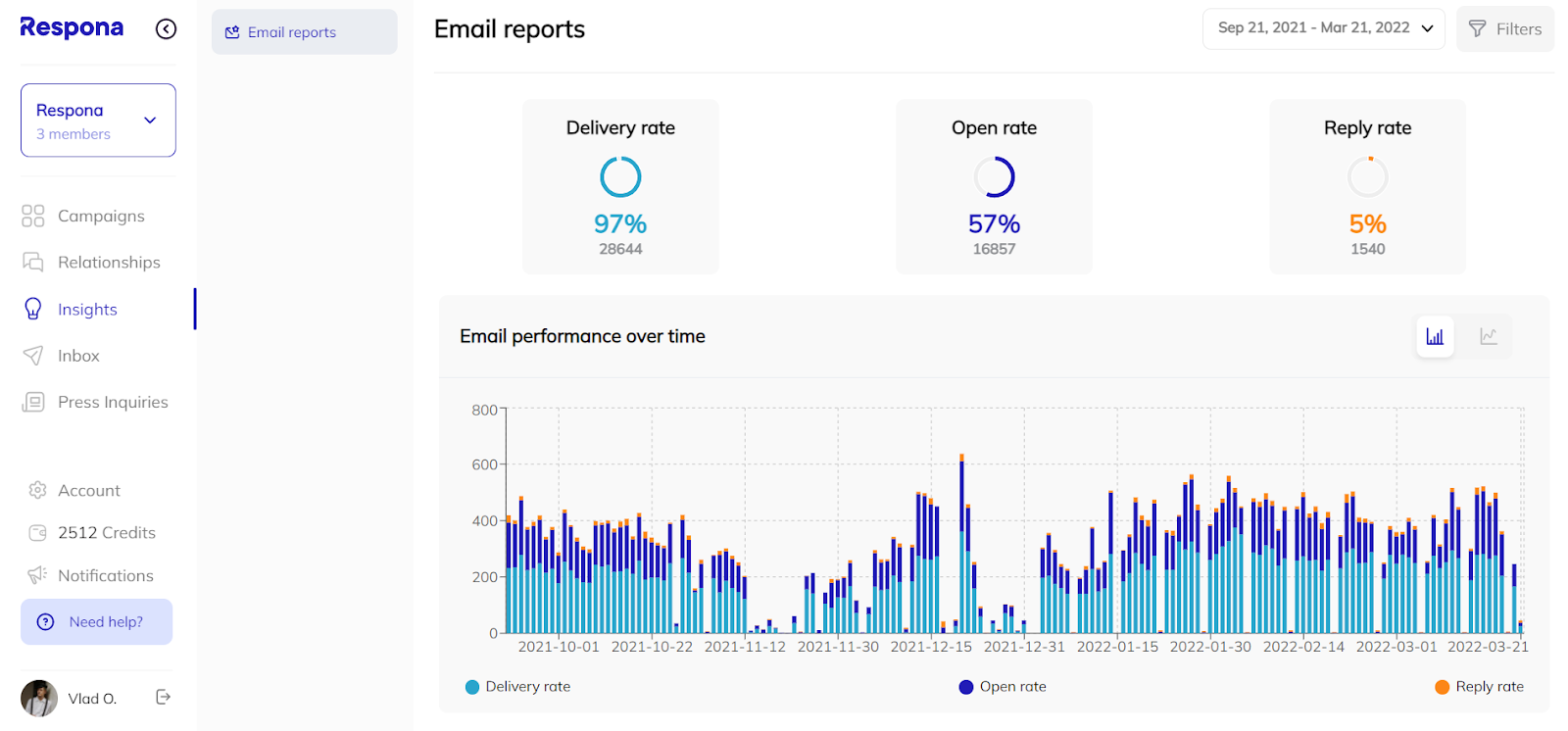
In addition, Respona keeps track of every single individual’s contact information in the “Relationships” tab. To make sure you don’t reach out to them a second time by mistake, you can add them to an “Unsubscribe” list.
Respona also has the option to limit the number of daily emails sent from your address to make sure your account isn’t viewed as spammy. You can also set the minimum delay between your emails to space them out.
Additional features, like the email warmup functionality, are also planned for the future.
Link building cheat sheet
Over To You
Hopefully, these tips will help you maintain a good reputation authority or even recover it if you have recently taken a hit.
And if doing all this emailing by yourself seems like a lot of work, don’t worry; we can give you a helping hand with your email marketing outreach process.
Don’t hesitate to start your 7-day free trial with Respona to see how!


